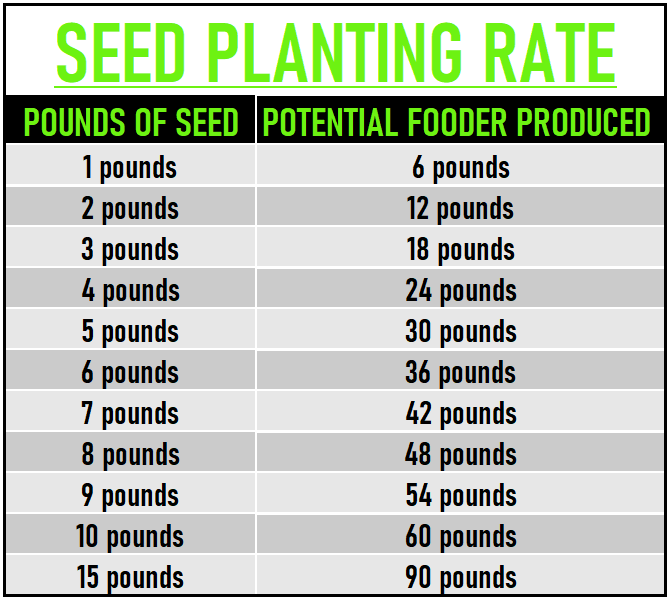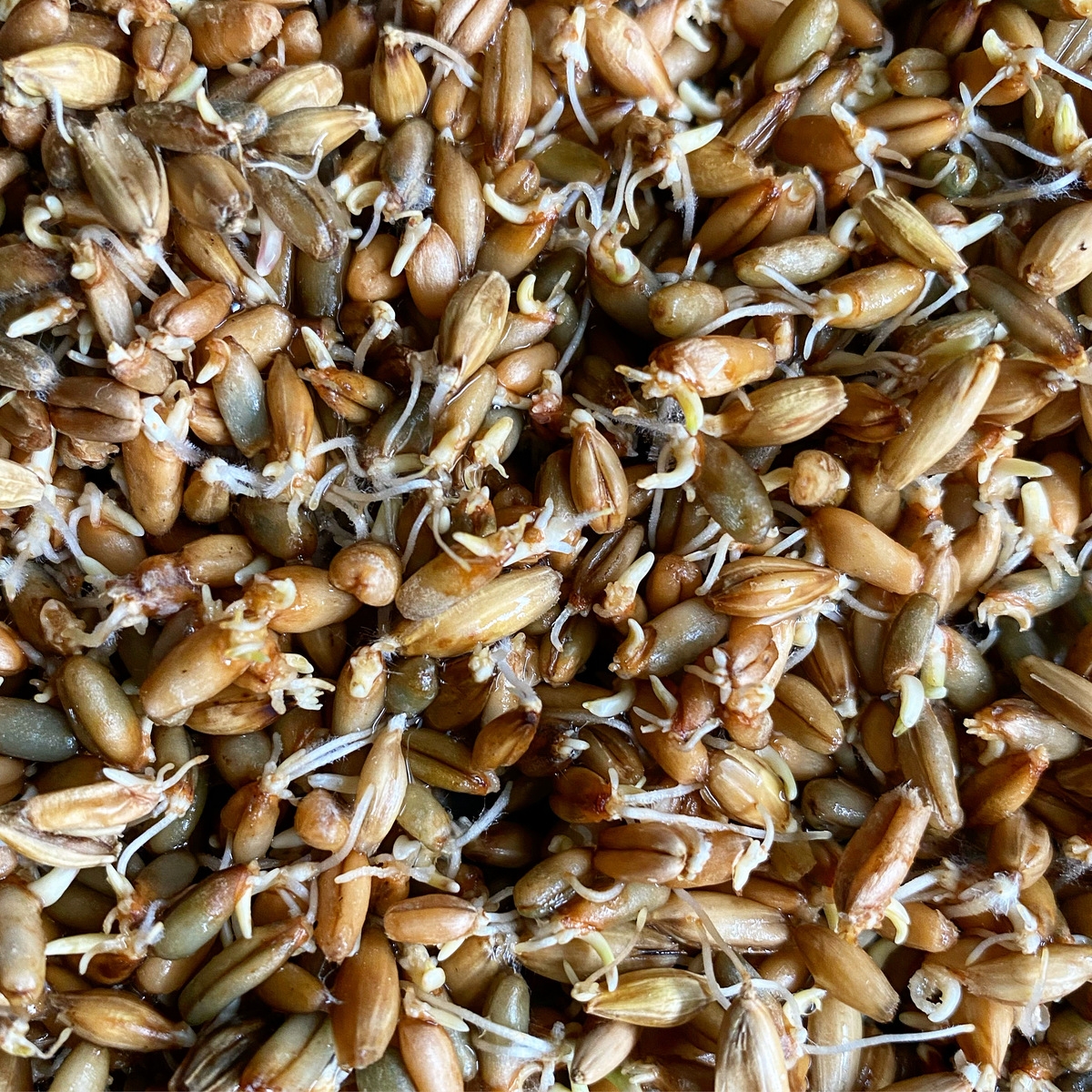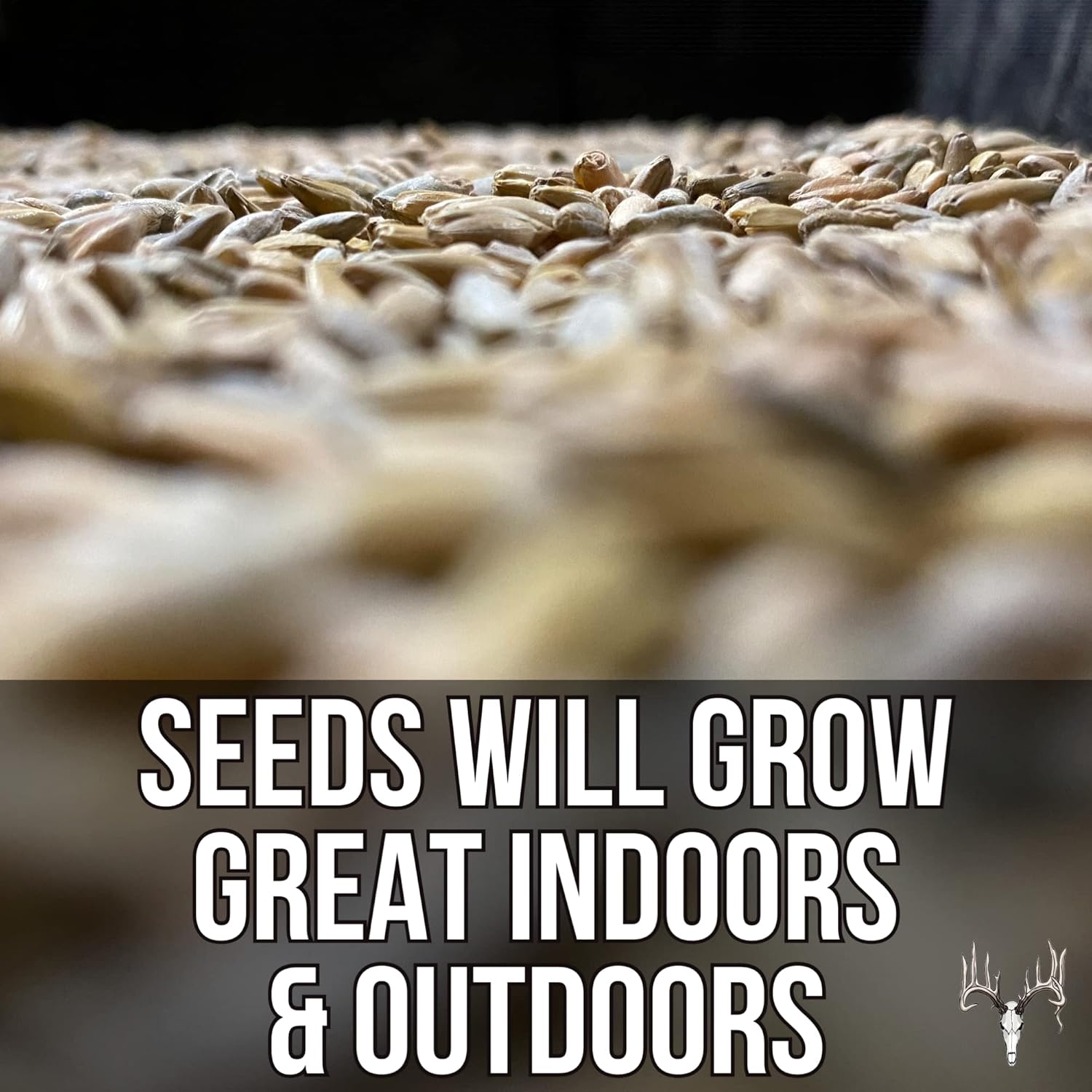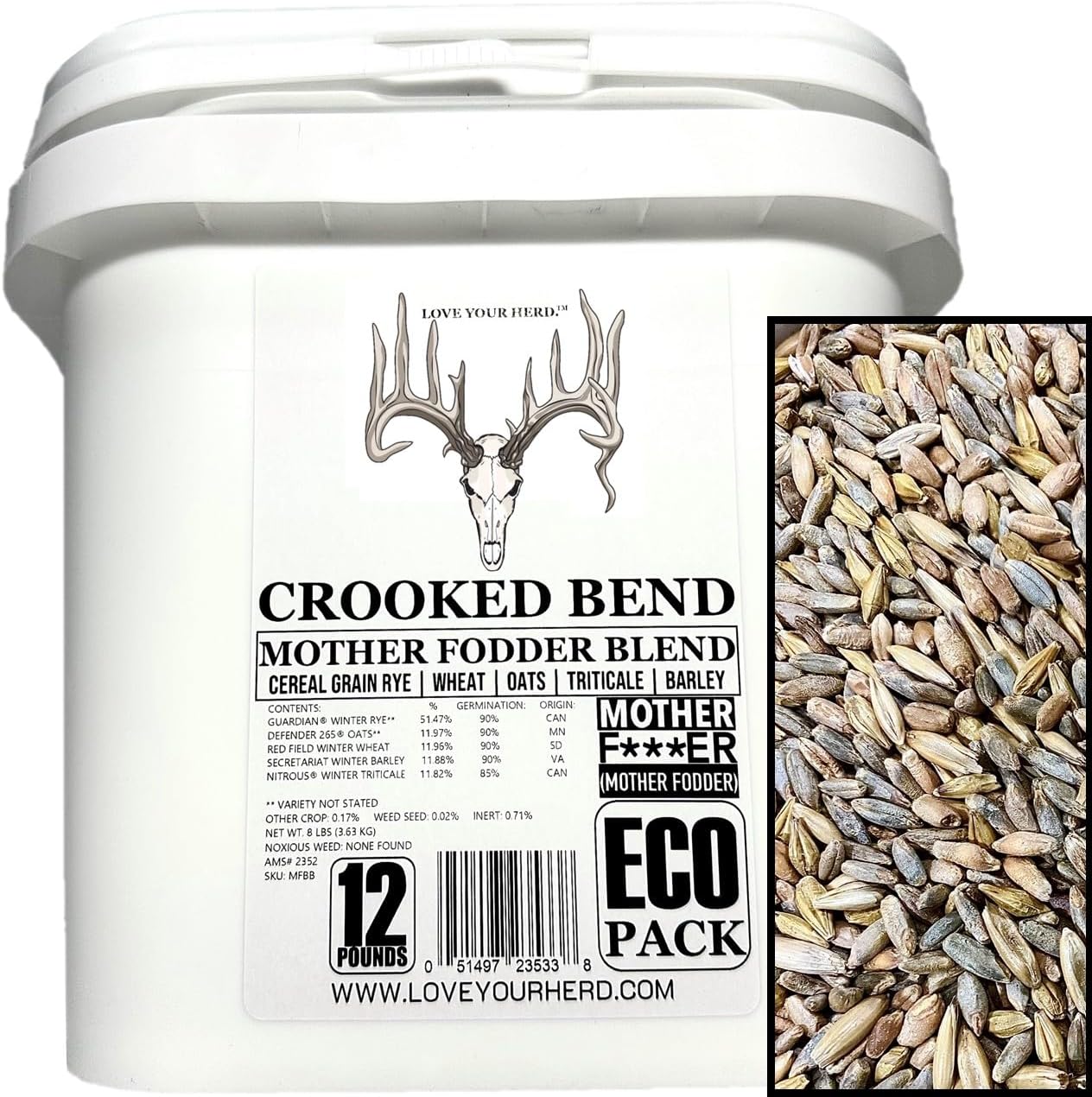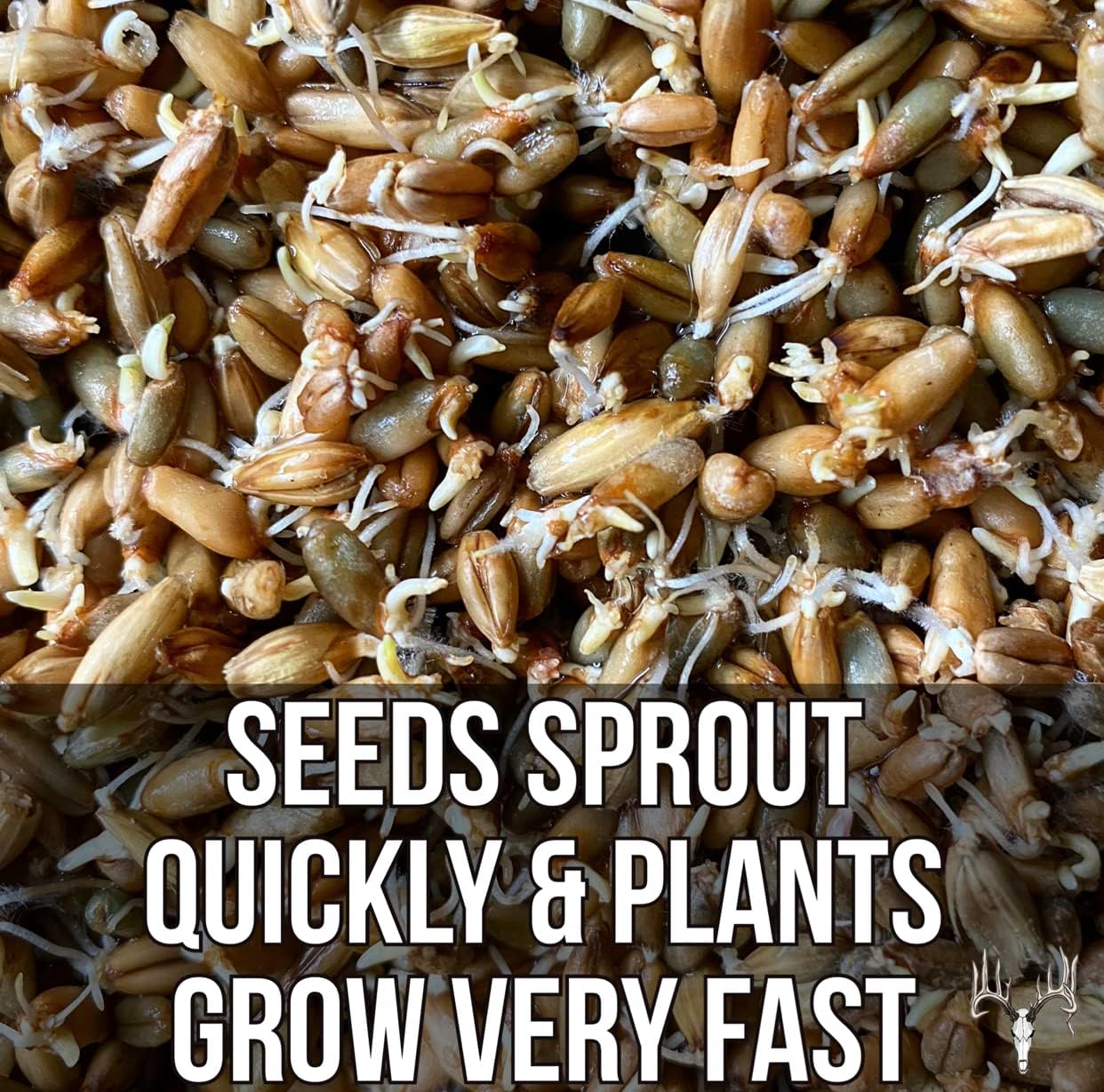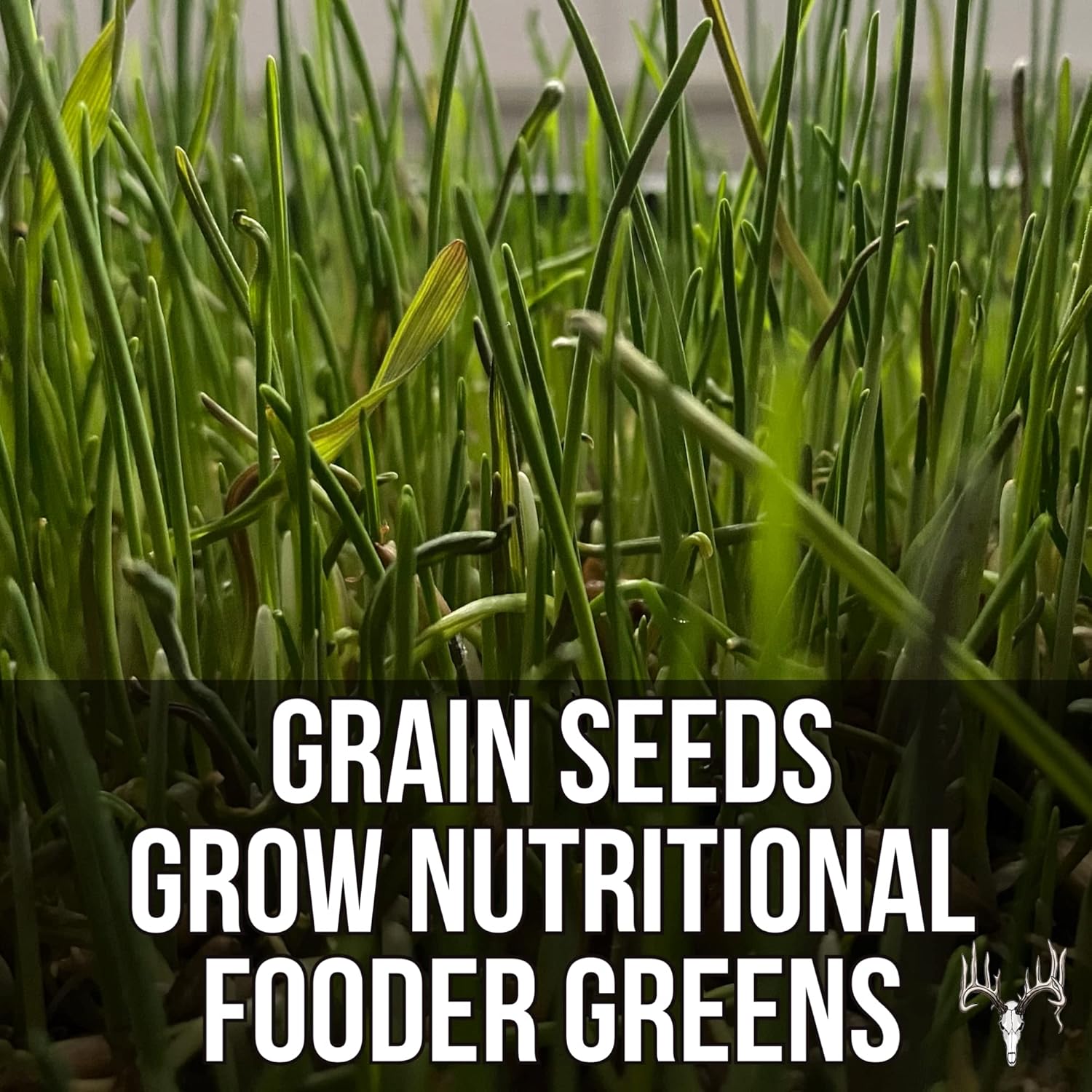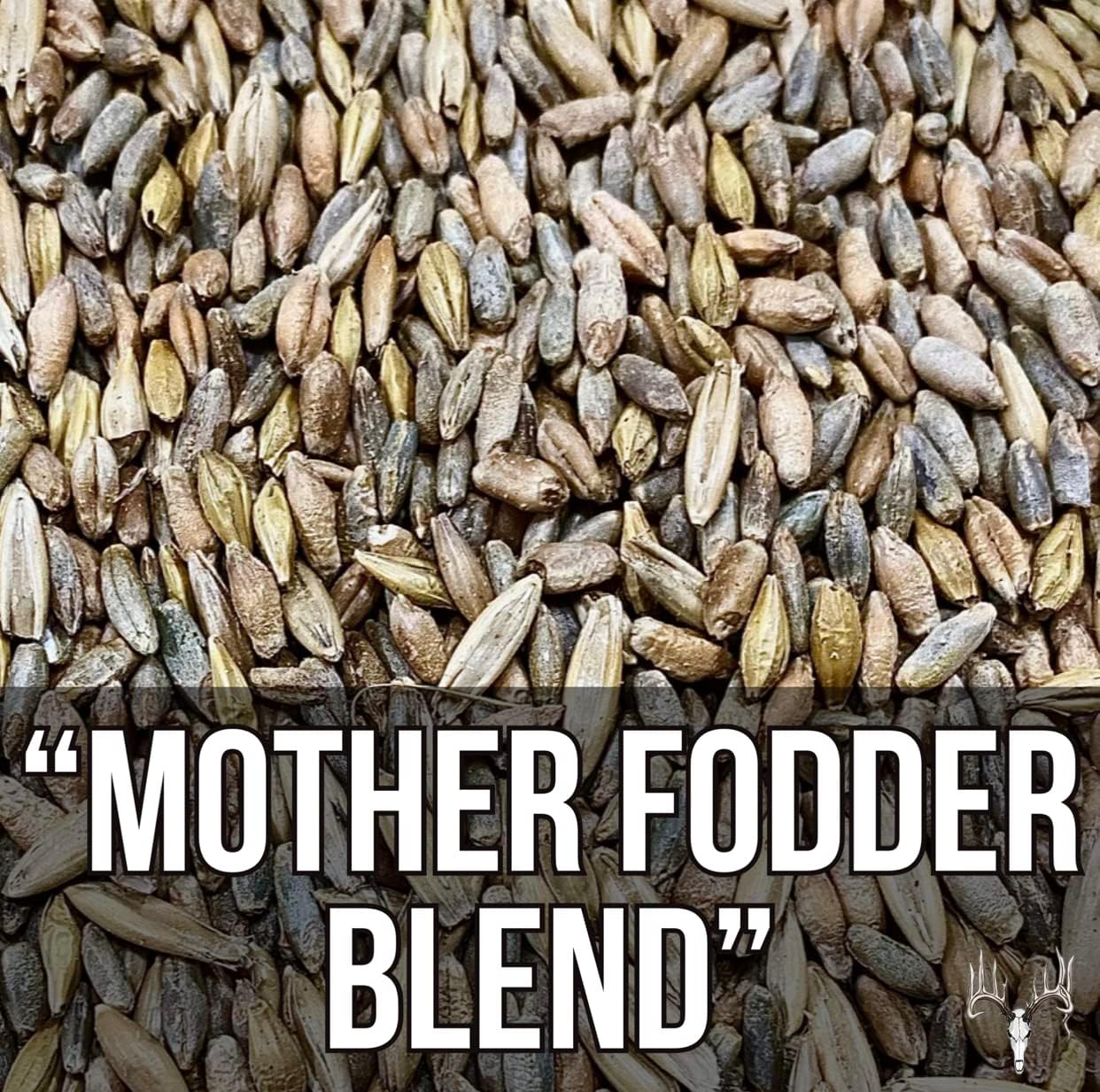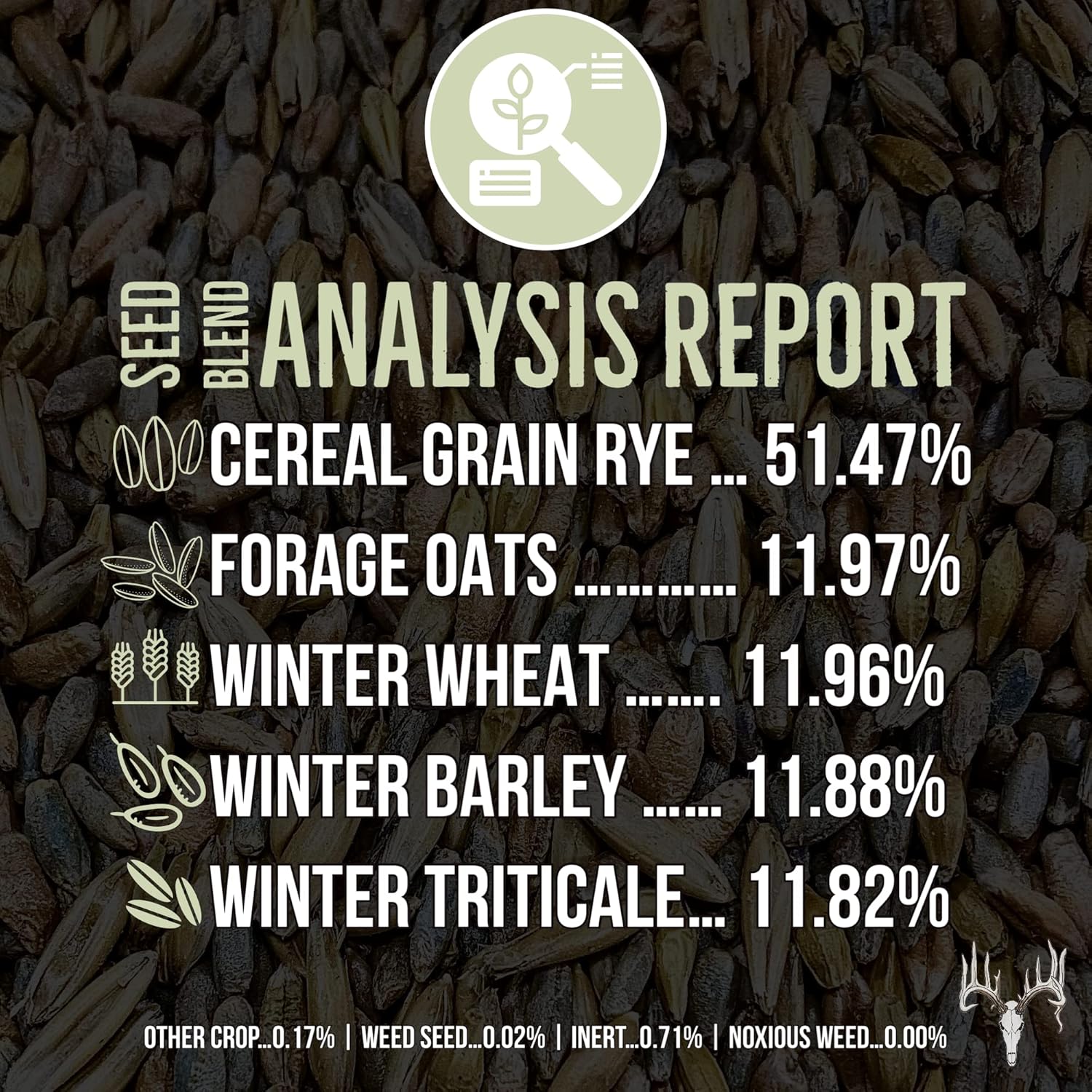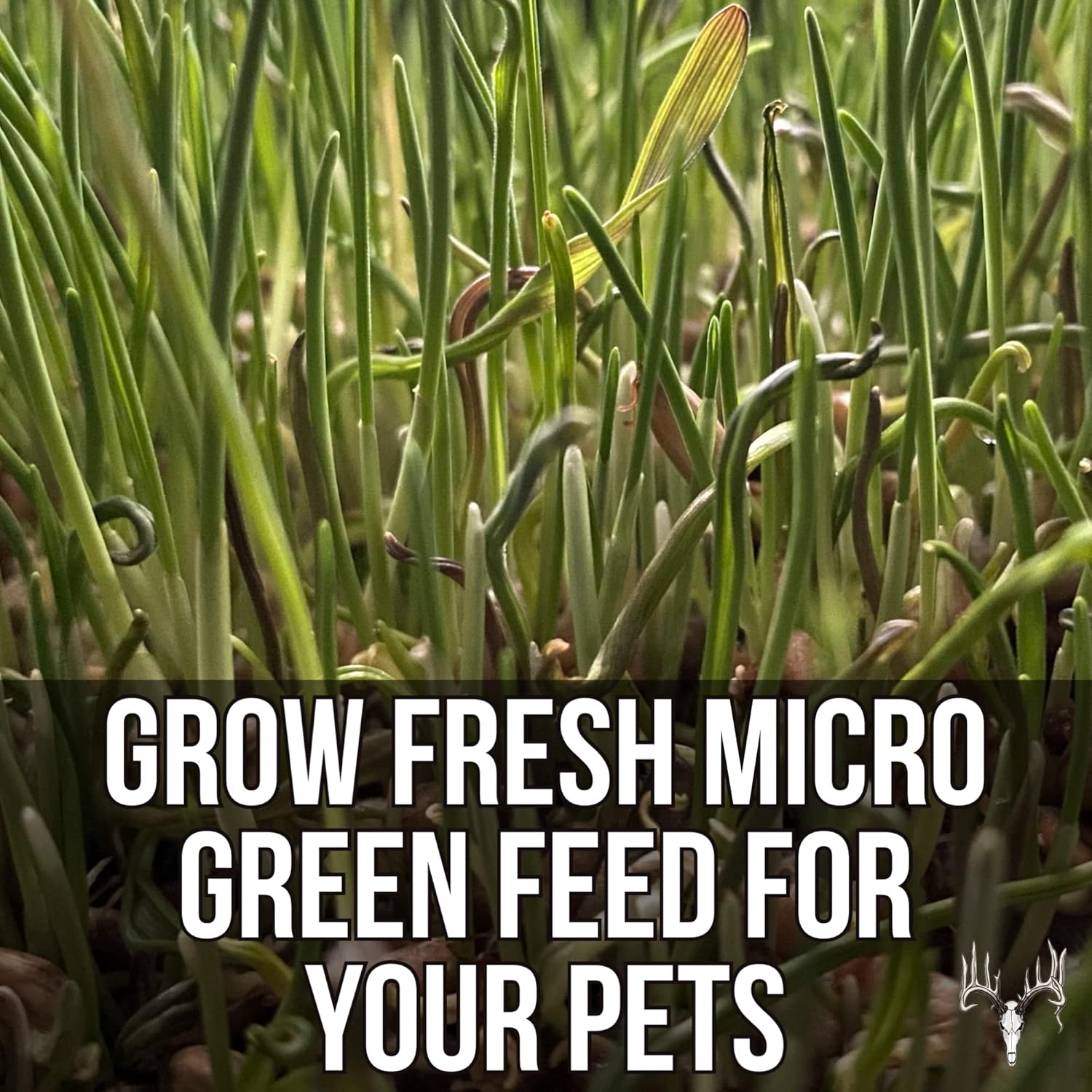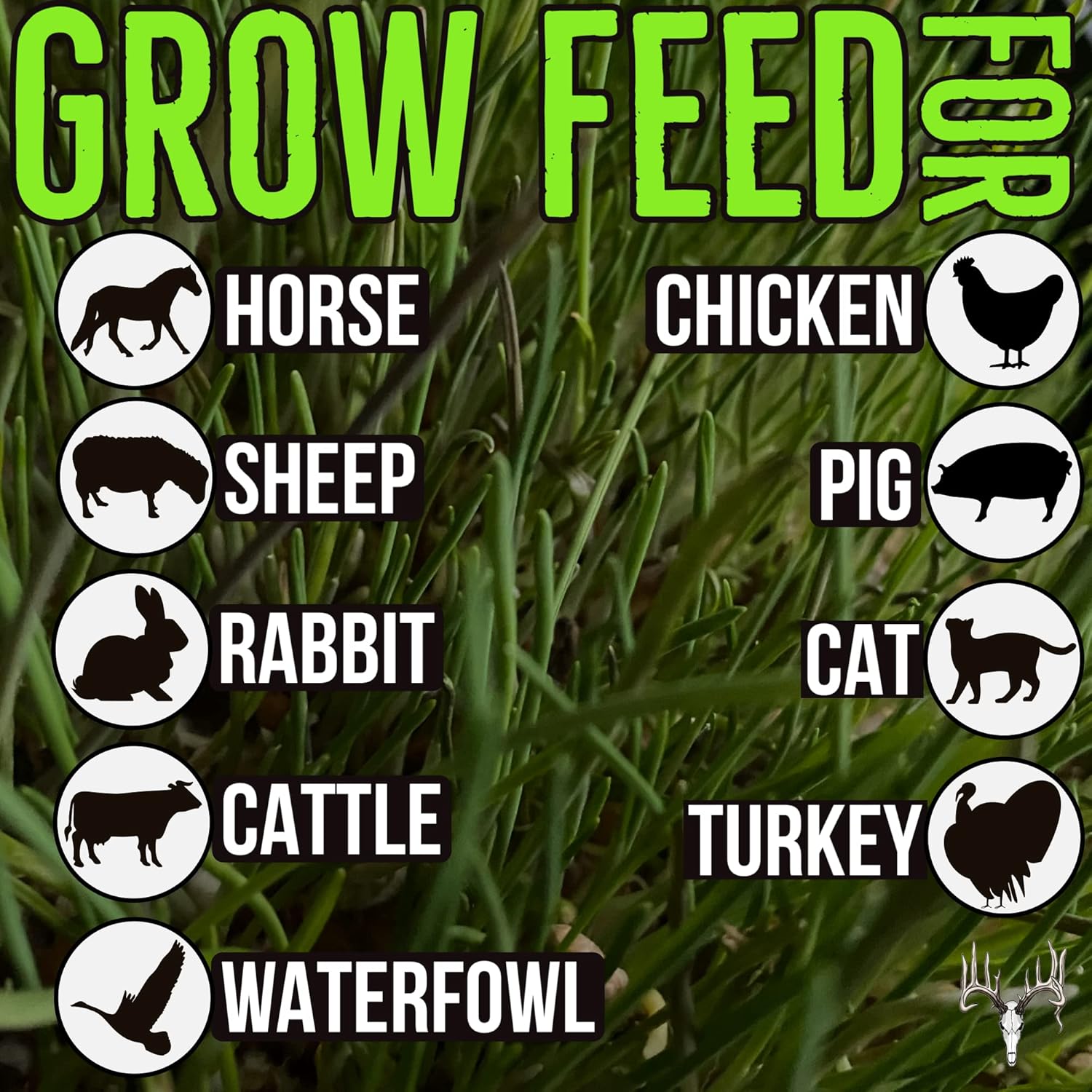Mother Fodder is a mixture of five cereal grain seeds which produce and excellent quality food source that is quick and easy to grow. This blend consists of cereal grain rye, wheat, triticale, barley and oats which can be sprouted and grown as feed for your livestock and pets. Fodder is very similar to the same process that us humans use to grow fresh sprouts for salads and sub sandwiches. Sprouting these cereal grain seeds amplifies the natural vitamins, minerals, enzymatic activity, proteins, omega 3s and amino acids. For example, barley has a crude protein percentage of 12.7% and a crude fiber percentage of 5.4% as a seed. When barley is sprouted as fodder these percentages spike to a crude protein percentage of 15.5% and a crude fiber percentage of 14.1%. Another benefit comes in the form of livestock digestibility which doubles compared to eating seeds (going from 40% to 80%) resulting in more nutrition from a smaller volume of feed. This fresh and nutritious fodder is fed whole; greens, seeds, and sprouts, all of it. Fodder can be grown as an occasional fresh treat or can be incorporated into the daily feed rotation along with recommended hay and proper minerals. If daily fodder feeding is your goal then be sure to gradually transition your animals diet in order for them to become acclimated.
Mother Fodder is simply grown with water and requires no fertilizer or soil. To grow fodder, simply wash the cereal grains by rinsing well and allowing them to soak overnight in clean water. The next day, drain the water and lay the wet cereal grain seeds on to a growing tray. Be sure that your growing tray can drain very well. Do your best to not layer or stack the seeds on top of each other, as this will result in waste. Keep the growing tray in an area that is 60-75 degrees and receives ambient light (direct light works great too but is not required). Cover the growing tray for only the first day and then remove the cover for the remainder of the grow time. Lightly water the tray three to five times a day with a spray bottle to keep seeds and root growth moist. Try to have fresh moving air in the area your fodder will be growing to help discourage any mold development. After eight to ten days you will have a sheet of neon green sprouts that are about six inches tall. Flip your growing tray and pull out the fresh fodder which can be divided into smaller portions or fed directly to your critters. This fodder is loved by chicken, cows, turkey, horses, ducks, sheep, pheasants, geese, goats and other farm animals and pets.
Mother Fodder is intended to be used to grow fresh fodder feed as an occasional special snack or as a regular daily source of nutrition for farm animals and pets like cows, pigs, sheep, horses, chickens, ducks, turkey, rabbits, goats and more. The following numbers are rough estimates on daily feeding amounts per animal type (consult your veterinarian for specific recommendations for your animals):
- Horse: 2%-3% of their body weight in fodder (plus hay ration).
- Beef Cow: 2%-3% of their body weight in fodder (plus barley straw ration).
- Dairy Cow: 3%-5% of their body weight in fodder (plus barley straw ration).
- Sheep: 2%-3% of their body weight in fodder (plus hay ration).
- Goat: 2%-3% of their body weight in fodder (plus mineral and hay ration).
- Dairy Goat: 3%-5% of their body weight in fodder (plus mineral and hay ration).
- Alpaca Lama: 2%-3% of their body weight in fodder (plus hay ration).
- Pig: 2%-3% of their body weight in fodder.
- Rabbit: 3%-5% of their body weight in fodder (plus hay ration).
- Chicken: 2%-3% of their body weight in fodder (plus grit and calcium).
Bulk pricing available for orders over 1,000 pounds.
